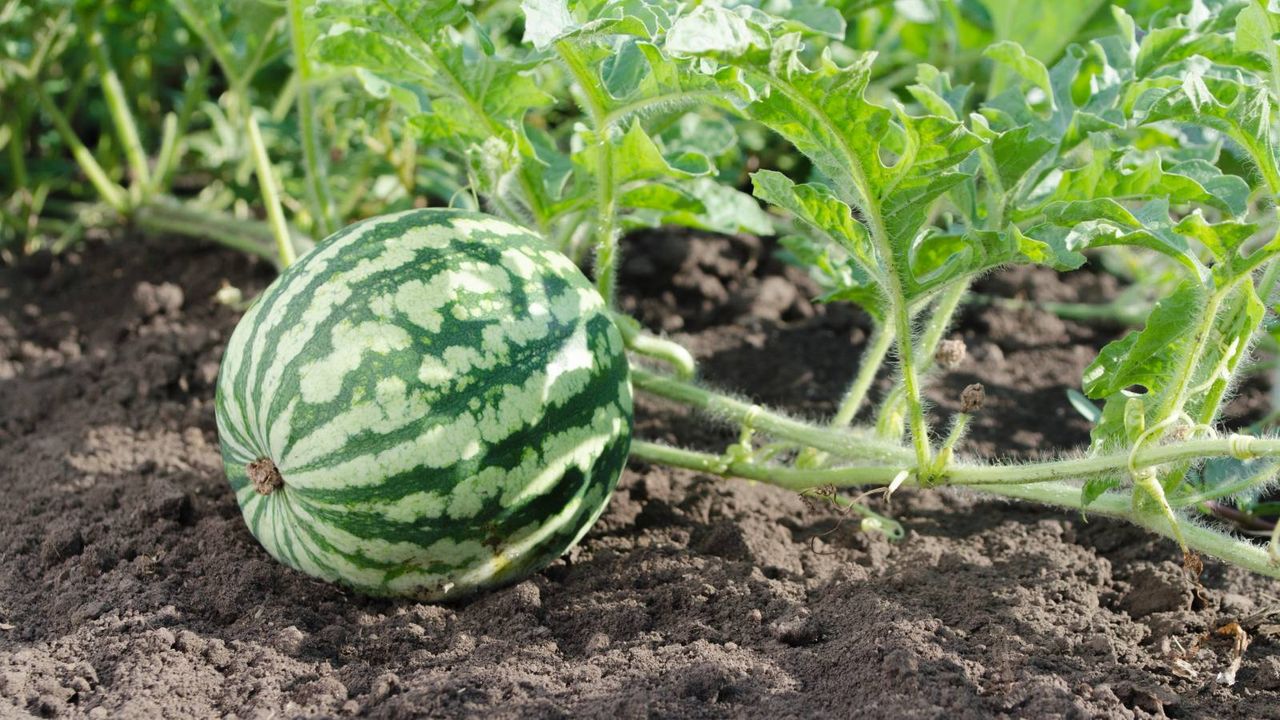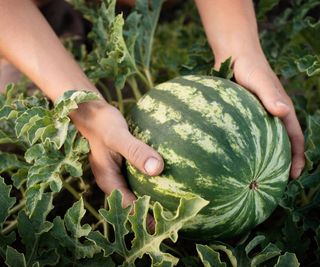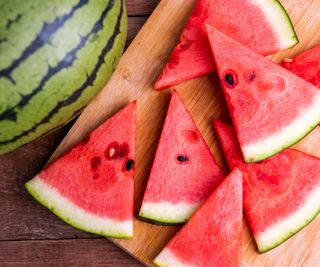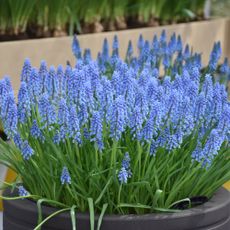How To Grow Watermelon For Tasty Fruit All Summer Long
Learn how to grow delicious watermelon this summer!


Quick Facts
Botanical name: Citrullus lanatus
Height: ground-level vining plant
Spread: ground-level vining plant
Sun exposure: full direct sun
Soil requirements: well-draining
Hardiness zones: annual
When to plant: start the seeds indoors 4 weeks before the last spring frost
As summer grows closer, you may be wondering how to grow watermelon. The juicy fruit of these iconic melons epitomize summer sun and fun. Watermelon plants require a lot of space and sun, a sunny site and well-draining soil. You can grow watermelon more quickly by starting the seeds indoors before the first spring frost.
Watermelon Plant Care
Watermelon plant care is easy. Here are the basics.

Light
Watermelons need between 8 and 10 hours a day of sunlight to bring fruit to maturity.
Water
Given how juicy the fruit are, it will come as no surprise that watermelons need lots of water. You need to keep the soil moist to a depth of 6 inches (cm). The ideal way to water is drip irrigation.
Temperature & Humidity
Watermelon prefer warm air and warm soil. Excess humidity can cause mildew and other fungal issues. The soil should be warm – some 65 degrees F – before planting.
Soil
Well-draining soil is essential when planting watermelons. Neither very acidic nor very alkaline soils work well for growing this fruit. Keep the soil pH at between 6.0 and 7.0.
Fertilizer
It’s best to do a soil test to see which, if any, nutrients are lacking. Otherwise, apply a balanced product. Blending in organic compost will improve the soil.
Gardening tips, videos, info and more delivered right to your inbox!
Sign up for the Gardening Know How newsletter today and receive a free copy of our e-book "How to Grow Delicious Tomatoes".
Problems, Pests & Diseases
Aphids and cucumber beetles can attack watermelon plants, with late-planted crops being the most affected. Powdery mildew and wilt are the diseases to look out for. Deer are attracted to the foliage and can ruin a crop.
How to Plant Watermelon Seeds

You can start watermelon seeds indoors a month or so before the last spring frost. Alternatively, plant the seed outside in worked beds in hills about 6 feet (2 m) apart, with 9 feet (3 m) between rows. Yes, watermelon vines need elbow room. You can help the soil warm up by placing black plastic over the area before planting.
Thin seedlings when they are established, leaving three healthy shoots per hill. to the best three plants per hill. If you want to plant seedless melons, intermix a row of seeded melon plants for pollination.
Harvesting
Different varieties of melons have different times to maturity. Generally, they are ready for harvest between 70 and 90 days after planting, or 35 to 45 days after flowering. Look for a curly tendril at the stem – when it is dry, the fruit is ripe. You can also tell by tapping the fruit. When they are ripe, the noise sounds hollow.
Storing
Watermelon fruit can be stored for a few weeks at 45 degrees F.

Varieties
There are many different varieties of watermelon seeds on the market. If you want the biggest fruit, pick Mardi Gras, Royal Majesty, or AU-Producer. For early harvest, consider Sugar Baby, Yellow Baby, or Golden Crown.
Frequently Asked Questions
How long does it take to grow a watermelon?
From starting seeds in February or March to harvest will be about 80 – 90 days.
Do watermelons need full sun?
Yes, watermelon require 8 – 10 hours of sunshine a day.

Teo Spengler is a master gardener and a docent at the San Francisco Botanical Garden, where she hosts public tours. She has studied horticulture and written about nature, trees, plants, and gardening for more than two decades. Her extended family includes some 30 houseplants and hundreds of outdoor plants, including 250 trees, which are her main passion. Spengler currently splits her life between San Francisco and the French Basque Country, though she was raised in Alaska, giving her experience of gardening in a range of climates.
-
 Best Tomatoes For Containers: 10 Tastiest Varieties For Plentiful Produce In Compact Areas
Best Tomatoes For Containers: 10 Tastiest Varieties For Plentiful Produce In Compact AreasThese are the best tomatoes for containers that prove you don't need to have a large space or elaborate garden to grow delicious produce.
By Bonnie L. Grant
-
 Ultimate Potted Flowers For Spring: 8 Brilliant Blooming Options for Spring Containers
Ultimate Potted Flowers For Spring: 8 Brilliant Blooming Options for Spring ContainersCelebrate the most uplifting of seasons with the most dazzling container flowers imaginable. Here, we present some of the loveliest potted flowers for spring…
By Tonya Barnett